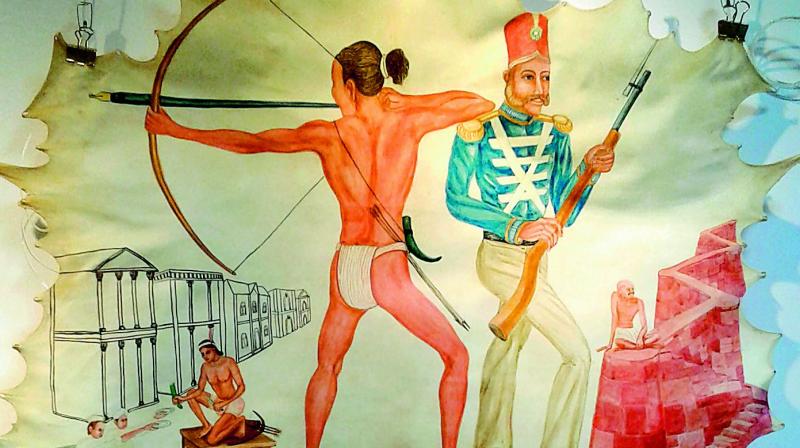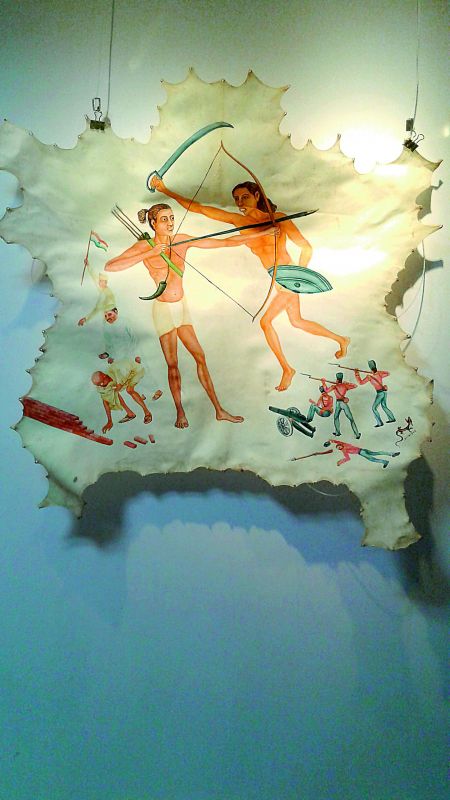Realistic concerns

The creative trajectory of Subodh Singh makes a serious effort to initiate awareness and concern about a consistently obvious flaw in our society. The artist believes that the ingrained trait has been a source of disturbance and unrest. “It is evident from the examples I have discussed in my work that even though we are living in a democratic country, the problems of adivasi people are not being addressed at the national level, which includes the nationalist historiography,” explains the artist.
 The representational anecdotes are recreated in an allegorical manner, so that the event and thought gets easily understood and absorbed by the viewers.
The representational anecdotes are recreated in an allegorical manner, so that the event and thought gets easily understood and absorbed by the viewers.
The figurative drawings, paintings and sculptures combined into a show titled Revisiting Eklavya’s Story are presently on display at Nehru Art Gallery. Narration is a very important aspect of these works and to make it effective the artist has included excerpts from eclectic visual materials like popular posters, etching prints of colonial times and some photographs. The representational anecdotes are recreated in an allegorical manner, so that the event and thought gets easily understood and absorbed by the viewers. The shift from one incident to other grants an undercurrent of subdued energy to the works. A series of nuances, sections, emblems are complied together into a random sequence. The artist seems to have mentioned the details in his expression in the same chronology as he reminisced and thought about them. When asked about the symbolic relevance for using goat skin as the base of the works, Subodh reasoned that the skin is the left over part of the animal, not used for consumption. This aspect or pattern denotes ‘power’ and ‘manipulation’; hence he felt that it was the most appropriate base for his visual dialogue.
He tells more about his work, “Every artist asks a question to himself as to what his art means or wants to convey. Personally, I believe in talking through my work about issues I think strongly about and thus I work on socially relevant subjects. My present series started with the mention of the sacrifice Eklavya made during the ancient period, then I found similar aspects repeated during the colonial period (Santhal revolt) and then in contemporary times (Soni Sori incident) as well. So the thought process naturally took me to symbolic references and anecdotes that belonged to different time periods yet were so much alike.” He explains further, “This series brings to fore a particular kind of discrimination which is ubiquitous in our socio-political system.”

